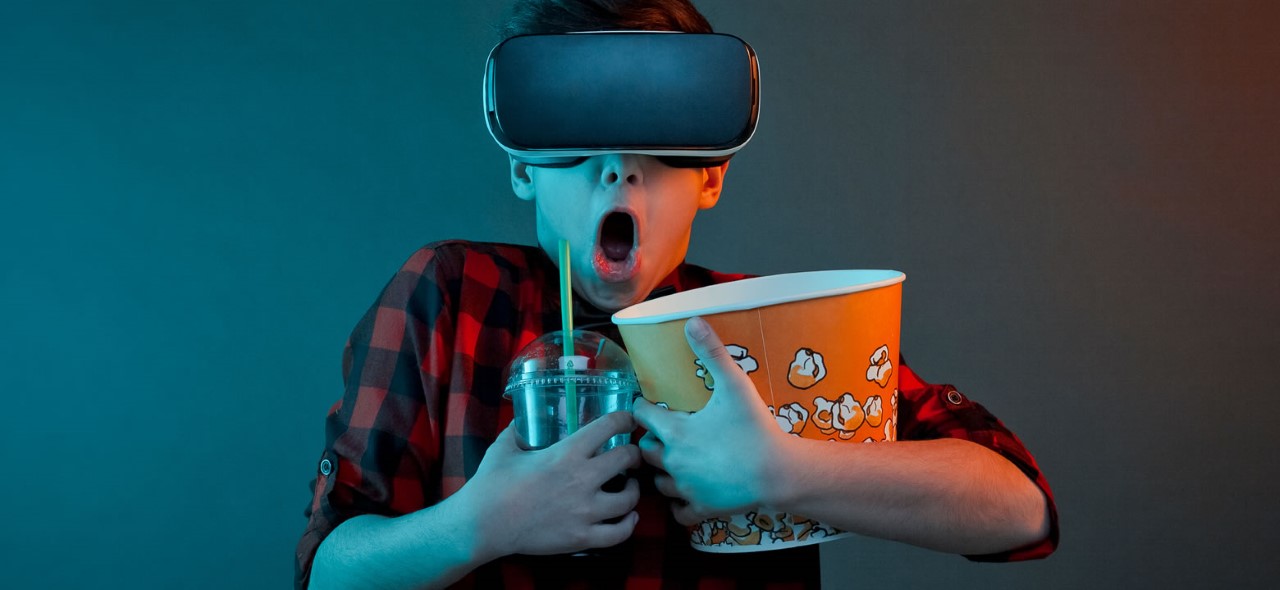
Virtual reality is the newest unexplored frontier in movies. Surpassing CGI, which until recently was cutting edge movie innovation, virtual reality or VR films offer users a unique experience that is unlike anything ever witnessed in the entertainment industry. Filmmakers hope to revive the modern movie business by highlighting what is new with VR movies.
Films that feature VR technology offer viewers a more realistic experience than traditionally made movies. In fact, because VR films are not bound by the same limitations as regular films, they allow viewers to fully immerse themselves in the action and witness the scenes with a 360 degree viewpoint.
When movie goers wear VR headsets while watching virtual reality films, they get to choose from what angle to view the scenes and on what to focus in the movie. They are not bound the director's intent nor guided by the director to look at a scene from a particular angle.
Users feel like they are in the middle of the scenes themselves and can watch what is going on all around them. This freedom permits movie goers to decide how they are going to interact with the film and what meaning or enjoyment they derive from it.
Because VR films offer an immersive experience, they are also more intense. People who watch them feel like they are in the midst of each scene and surrounded by all of the dialogue, movements, and actions of the movie. For some people, it can be overwhelming and exhaustive if they experience VR movies for too long.
To make them more user-friendly, VR films are typically shorter than their traditional counterparts. Filmmakers are choosing to present them in smaller increments that last less than an hour.
Some VR films are even available in chapters that allow the viewers to take in the movie bit by bit rather than for two to three hours at a stretch. These shorter increments permit the users to enjoy the VR films and interact easier with them rather than feel completely overtaken by the movies.
Virtual reality films are designed to allow audiences to interact with them. Along with taking them inside of each scene, the typical VR movie also encourages viewers to develop a relationship with the characters and experience the emotions and actions being played out along the way.
As witnessed in Kalina Bertrin's movie Manic VR, virtual reality movies even encourage viewers to use controllers to interact with characters in the film. In this instance, audiences get to experience what it is like to have bipolar disorder. They actually take on the role of one of the characters in the scenes of the movie.
In this respect, audiences are more than passive viewers when they go to see VR films. They are given the opportunity to take an active role in the film and determine to some extent how it plays out for them and what their takeaway from the movie ultimately will be by the time the movie comes to an end.
Finally, filmmakers acknowledge that VR films are still somewhat of an experiment with audiences. They are still determining if the VR experience can be enough to lure moviegoers back to the cinemas to buy movie tickets that admittedly will be slightly higher in price.
Movie makers also admit that VR films can change the whole cinema experience entirely. It could transform dramatically from one that encourages interaction with fellow audience members to a solitary experience. VR film viewers will all have different encounters with the movie and view it in an entirely unique way than others in the audience with them.
Further, VR films demand viewers to immerse themselves fully in the scenes to get the most from them. People will not have time to hold hands or eat snacks while watching the movies. They will be too busy using controllers and acting out their singular role in the films.
Virtual reality films hold the promise of offering viewers a unique, interactive experience in the cinema. Rather than being passive audience members, viewers take on roles that encounter characters in the film. They get to experience all of the action from a 360 viewpoint that is not bound by the limitations of traditional movies.